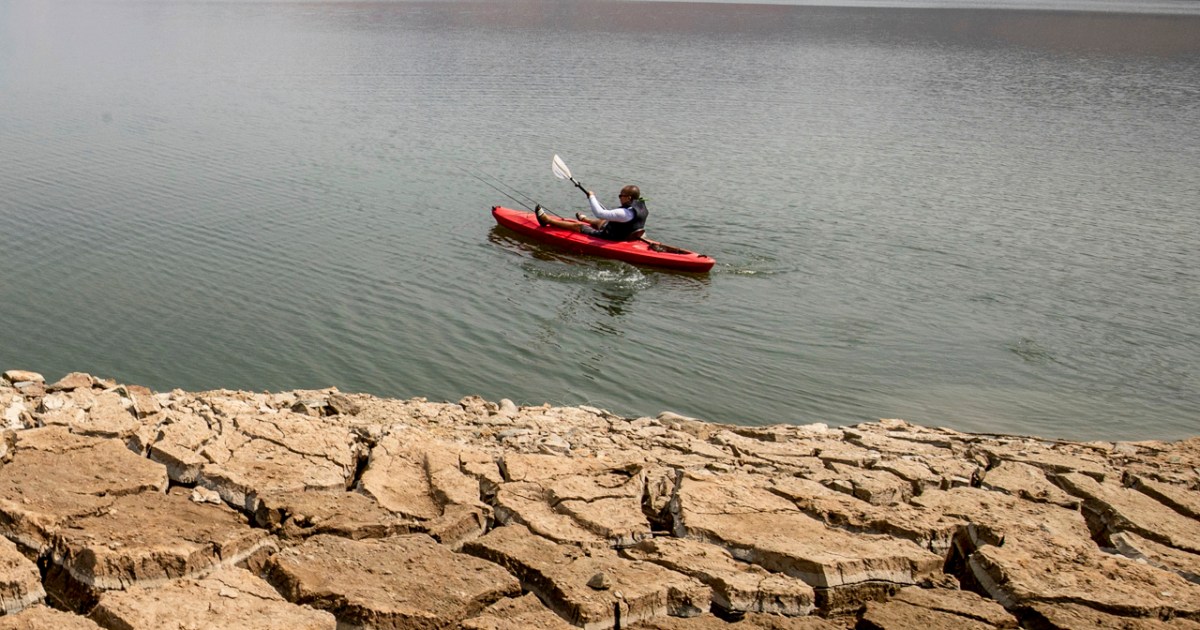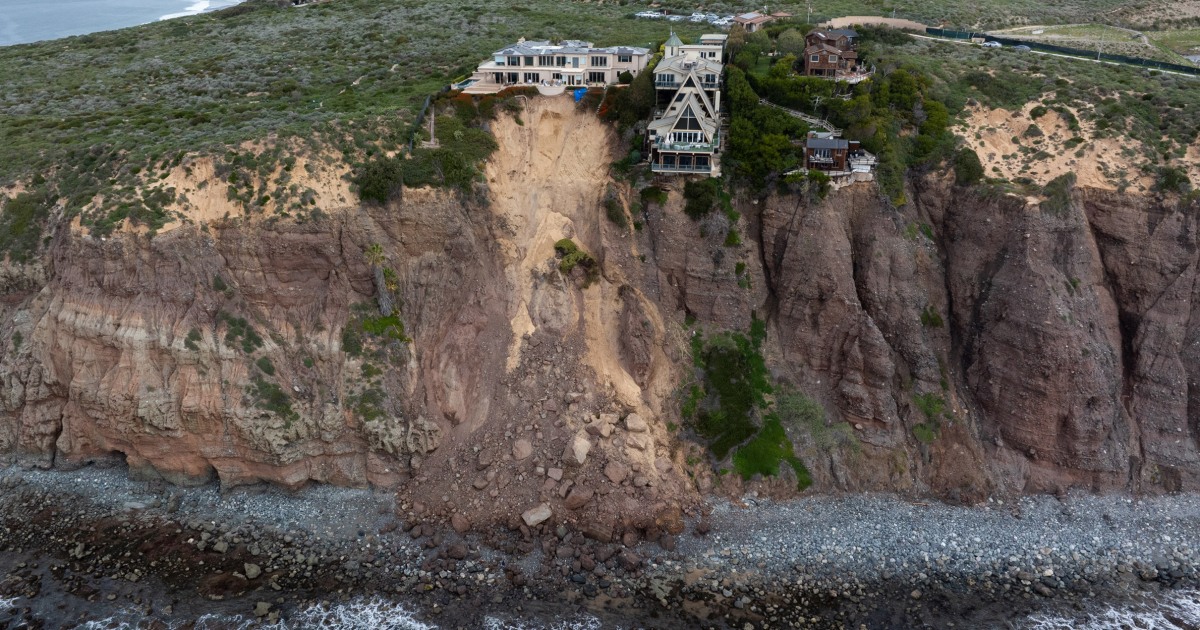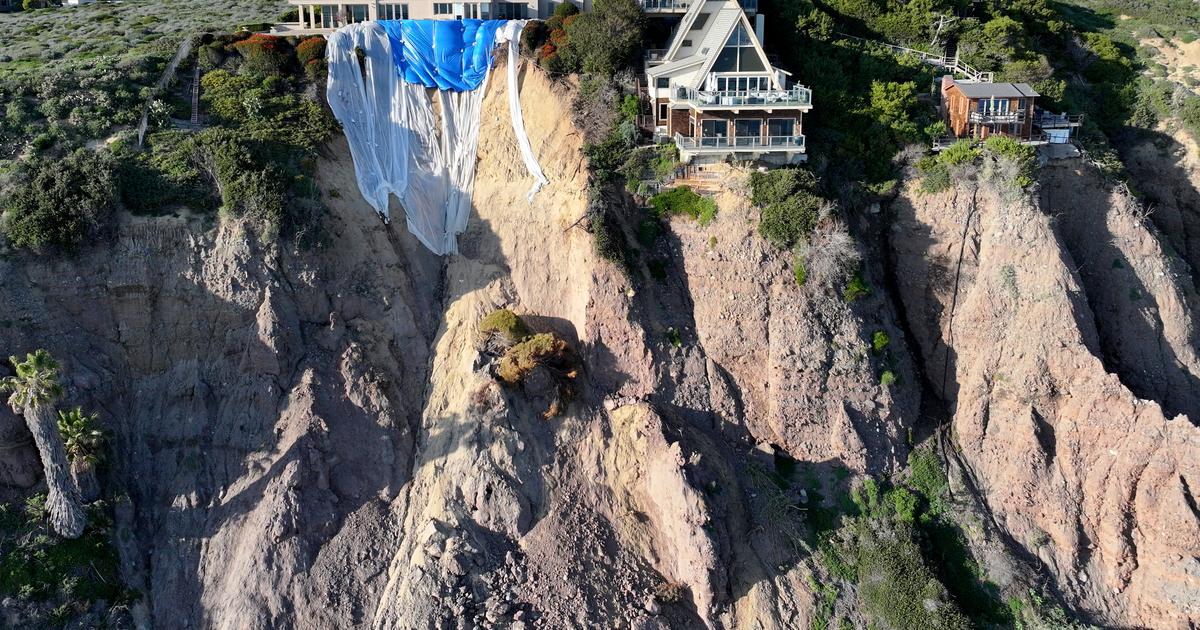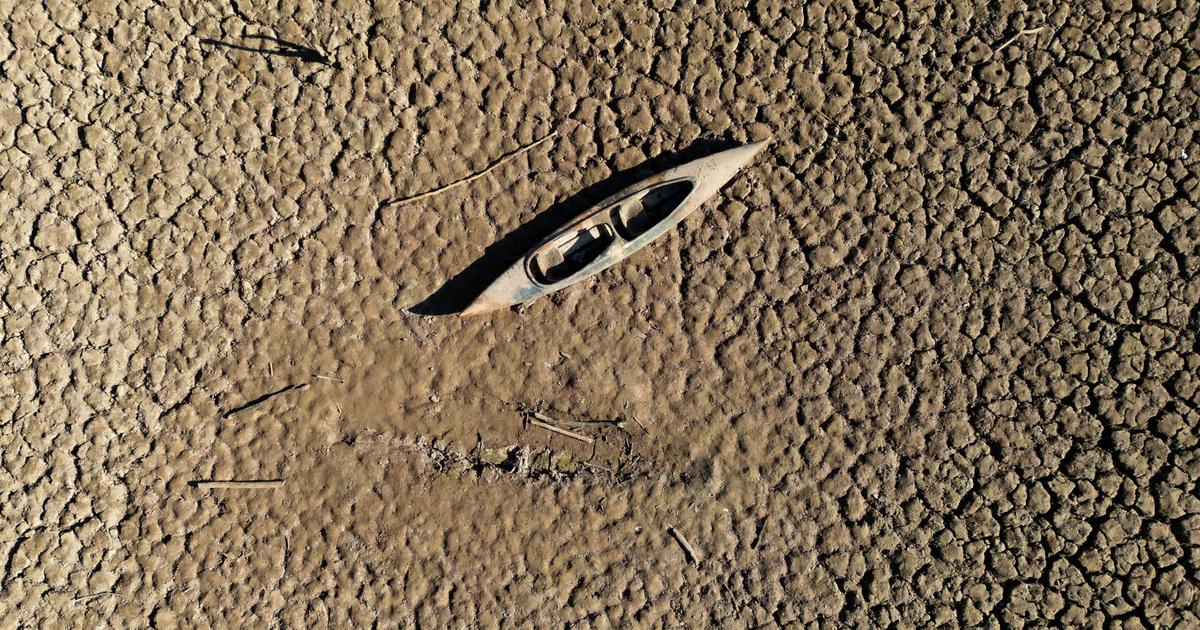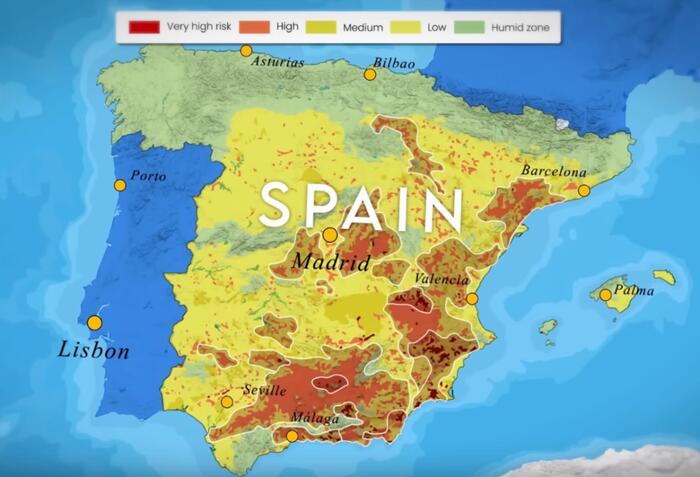By Evan Bush -
NBC News
California is a land of expansion and contraction.
Nowhere is that more clear than in its rivers: a month ago they were suffering from drought and now, suddenly, they are overwhelmed by the fearsome storms that hit the state.
"There is no perfect weather in California," says Jeffrey Mount, a senior fellow at the California Public Policy Institute's Center for Water Policy.
"Either the weather is incredibly wet or incredibly dry."
Multiple storms driven by atmospheric rivers have impacted the state since Christmas,
killing at least 21 people
, while landslides abound on roads and hundreds of thousands of people have lost power.
Those affected by bad weather in California will have relief on their state taxes
Jan 14, 202300:19
But despite all the rain that has fallen, state leaders are bracing for the possibility of more drought this summer in parts of the state.
"California is fighting both a drought emergency and a flood emergency at the same time," says Karla Nemeth, director of the state Department of Water Resources, adding that this situation is due to the impacts of climate change.
[California Governor: “This is only the eighth of nine atmospheric rivers we anticipate”]
The case of California exemplifies a central climate problem in the West: communities do not receive rainfall when they need it most.
And much of the infrastructure intended to help alleviate California's too-wet or too-dry cycles—its extensive system of reservoirs—was designed long before climate change was recognized as capable of intensifying droughts and storms.
Now, communities balance priorities.
They are desperate to store as much water as possible in reservoirs for the hotter, drier summers, but some have been under pressure to release some of the recent rainwater to control flooding that could be helped by a warmer atmosphere. warm.
Weeks of heavy rain have yet to fill the state's largest reservoirs, revealing just how severe the drought affected its water supply.
In general, much of the precipitation that has fallen during atmospheric river storms will not be stored for the summer.
A new round of rain and snow approaches California, a territory marked by bad weather
Jan 14, 202300:45
"The vast majority of the earth's water is running off," Mount said.
"There is no economically viable way to store it."
California is not only defined by its multi-year drought cycles, but also by its annual dry season, which runs roughly from May to September.
[California went from extreme drought to torrential rains (and the orographic effect makes it worse)]
The time of greatest demand for water, in late spring and summer, is when the least rainfall occurs in California.
That leaves the state's reservoirs — in groundwater, snowpack and the dam system — having to fill the seasonal gap and help the state weather prolonged periods of drought.
"California would be a shell if it weren't for water storage," Mount said.
"We would not exist."
"We are quite afraid": death in the south of the country and new threats in the west due to bad weather
Jan 13, 202302:01
In a normal year, snowpack can provide about one-third of California's water supply.
Groundwater generally makes up around 40% to 60% of the supply, depending on drought.
California has a system of about 1,400 human-made surface reservoirs and thousands of miles of levees to manage surface water.
Around two dozen large reservoirs are responsible for more than half of the total storage.
[California prepares for the onslaught of two new storms: "The ground is already saturated and it is very dangerous"]
Reservoirs are not only designed to store water, but also to manage flows during periods of heavy rain or snowmelt so that downstream communities are not flooded.
"We're in this constant tension," Mount said.
"You want to capture every drop you can. However, these are multi-use dams: they also have to control flooding. In order to control flooding, you need dams to be as empty as possible."
And, with climate change, wet and dry weather patterns are increasing.
Tornadoes in Alabama, storms in Georgia and severe weather in California cause death and destruction
Jan 13, 202301:07
"With the warmer weather we've had in the last decade or so, we're seeing less snowpack than we're used to, plus we're noticing it melting faster, and we're seeing more evaporation from watersheds," Jay said. Lund, deputy director of watershed sciences at the University of California, Davis.
Human-caused warming has increased the risk and severity of drought, leading to water scarcity, increased risk of wildfires and low water flows that endanger wildlife, according to research published in the Proceedings of the National Academy of Sciences.
["Don't worry, mommy," said the missing California boy before being swept away by the current]
A warmer atmosphere also allows atmospheric river storms, which are responsible for up to 50% of precipitation in some parts of California, to carry more water.
"They get bigger, which helps them, when they cross a spot, to last longer," said Marty Ralph, director of the Scripps Institution of Oceanography's Center for Western Climate and Extremes, whose research suggests the vast majority of flooding in western states are due to those storm cycles and that climate change will increase the severity of flood damage.
During recent storms, extreme drought has cushioned some impacts from heavy rains because there is plenty of space in the state's largest reservoirs, which have been affected by drought.
At least six dead in Alabama after tornadoes
Jan 13, 202300:45
Lake Oroville has a capacity of about 3.5 million acre-feet.
Before the recent series of atmospheric rivers, it stored less than 1 million acre-feet of water.
(One acre-foot is roughly equal to half an Olympic-size swimming pool.)
Since early December and the arrival of the storms, water levels have risen by about 650,000 acre-feet, Molly White, manager of water operations for the California State Water Project, said Tuesday.
Three more forecast storms are expected to raise levels an additional 400,000 to 500,000 acre-feet.
[A new round of rain and snow approaches California, a territory marked by bad weather]
"Our two largest reservoirs, Shasta and Oroville, were empty," Mount said.
"That's greatly reducing the downstream impacts of all this precipitation."
But smaller reservoirs have not been able to store all the runoff.
Folsom Lake, Lake Mendocino and Lake Millerton are among the reservoirs that have had controlled discharges, sending water downstream that could be very useful this summer but is now a burden.
Much of California's reservoir infrastructure was designed decades ago, when climate change was not a pressing concern and the weather forecast was less dire.
Also, part of that system is messed up.
He told her "mommy everything is going to be fine".
Shortly after the water tore it from his hands and they are still looking for him in California
Jan 13, 202302:00
As of last spring, state inspectors rated 112 California dams "less than satisfactory," and that meant 41 reservoirs were reduced in capacity.
Those problems cost California about 350,000 acre-feet each year, according to the state's water supply strategy.
Warm winters have caused California's snowpack to take major impacts.
If global greenhouse gas emissions don't decline, the Sierra Nevada could experience "episodic little to no snow" winters by the late 2040s, meaning more than half of the snow in a mountain basin will have disappeared
[The impressive aerial images of the sinkhole that swallowed two cars in California]
Meanwhile, the state continues to accumulate groundwater deficits.
In the Central Valley, Californians mine about 2 million acre-feet and that's more than returns to the ground annually, on average, Lund said.
The state is exploring a number of possible solutions.
Most dam operators are required to follow rules developed when many of those dams were built in the 1950s, 1960s and 1970s and when the weather forecast was poor.
"Almost all reservoirs don't allow the use of forecasts," said Jeanine Jones, drought manager for the state Department of Water Resources.
But that is starting to change.
More than 100 rescuers search for Kyle, the boy that the water snatched from his mother's arms
Jan 12, 202300:15
A new approach, called Forecast-Based Reservoir Operations, allows dam operators to use weather tools to help determine how much water they save or release.
In a pilot project implemented on Lake Mendocino, the strategy has allowed dam operators to save up to 20% more water as spring approaches, said Don Seymour, deputy chief engineer for the County of Water Agency. Sonoma.
[This is how survivors are rescued in Georgia and Alabama after tornadoes that killed 9 people]
Seymour said the strategy helped the agency avoid draining Lake Mendocino entirely in 2021. The US Army Corps of Engineers and other groups are exploring ways to expand the approach to other reservoirs dominated by atmospheric rivers, making it which could expand the supply.
The construction of new reservoirs is not a practical measure.
"We've built warehouses in all the good places," Mount said.
"The economic cost of reservoirs is extremely high."
Meanwhile, urban areas, including Los Angeles County, are looking at new stormwater collection projects.
In 2018, voters approved about $300 million in new taxes for projects like capturing stormwater and recharging groundwater.
"It hurts because this is where my daughter is growing up": Latinos facing destruction in California
Jan 12, 202300:34
"If that stormwater can be collected, pumped underground into basins, or stored through reservoirs or naturally engineered means like wetlands, the better it's done, the better equipped we'll be for dry spells," said David Feldman, a professor of urban planning. and public policy at the University of California Irvine.
In 2014, California lawmakers passed the Sustainable Groundwater Management Act, which requires local agencies to achieve groundwater sustainability by 2042.
[Biden declares a federal emergency in California due to the heavy rains that hit the state]
Some areas, such as the Chino Basin and Kern County, have developed programs to pump and recharge groundwater for future use.
"No matter what we do on the infrastructure side, we have to reduce the demand for water," Lund said.

